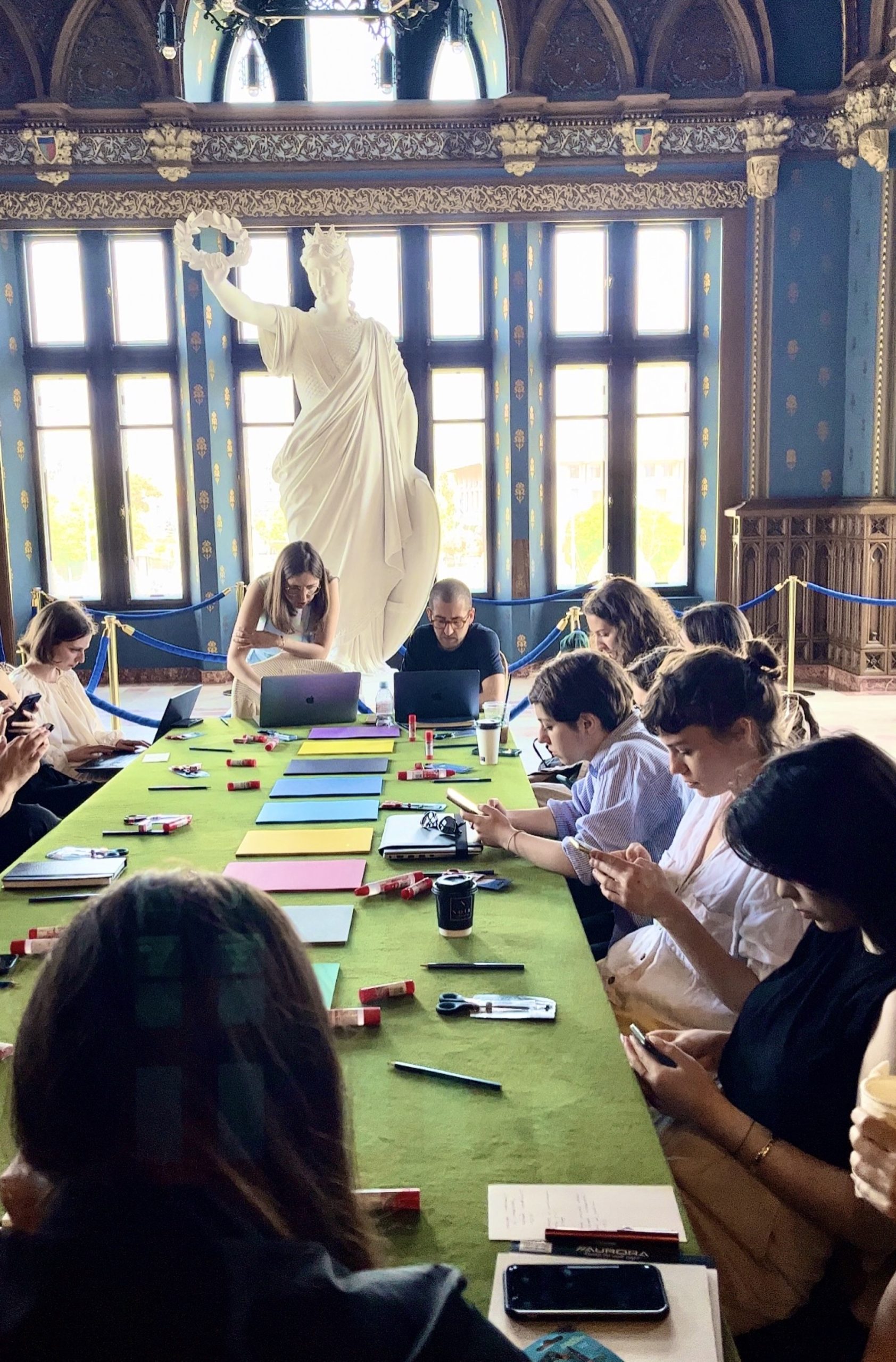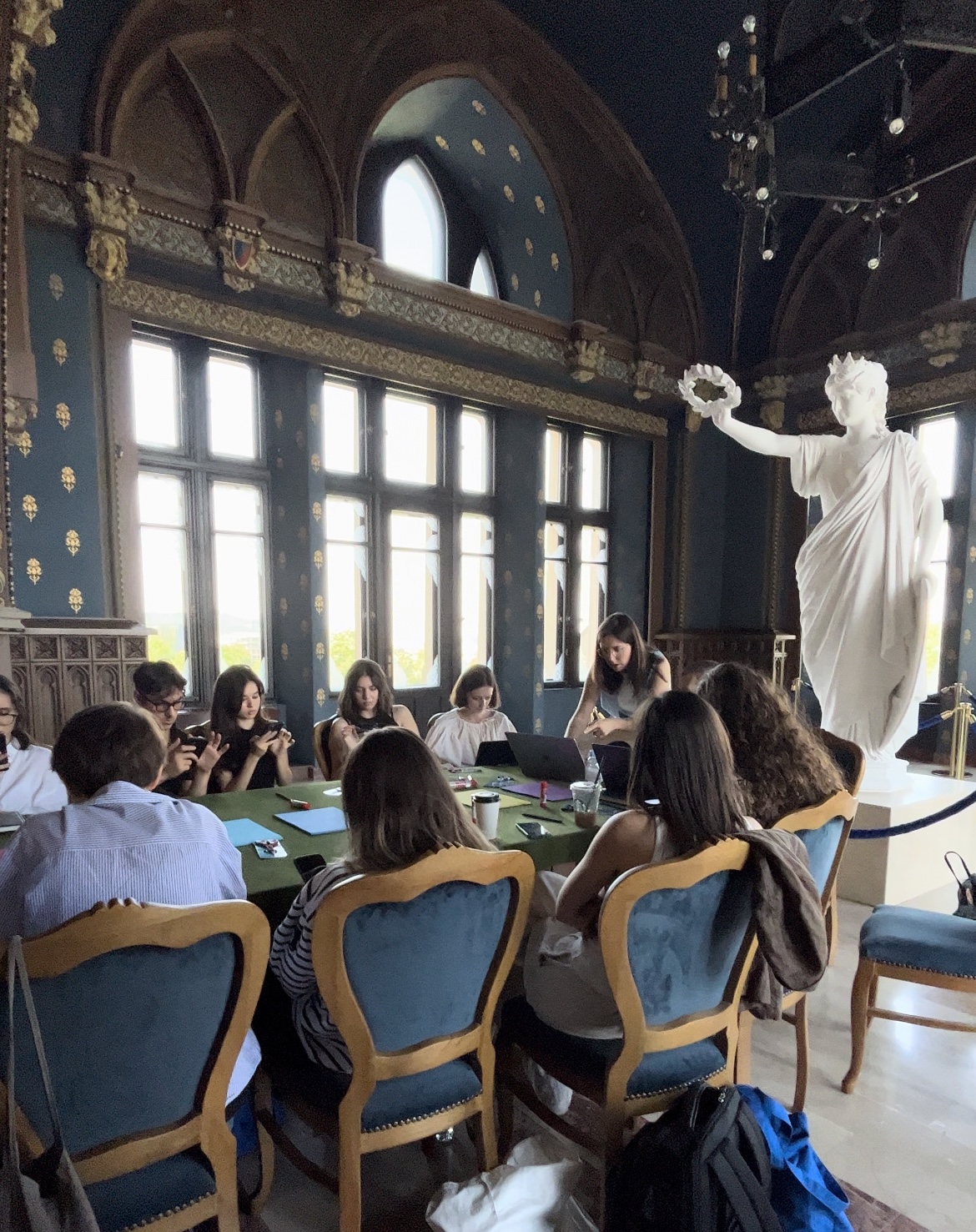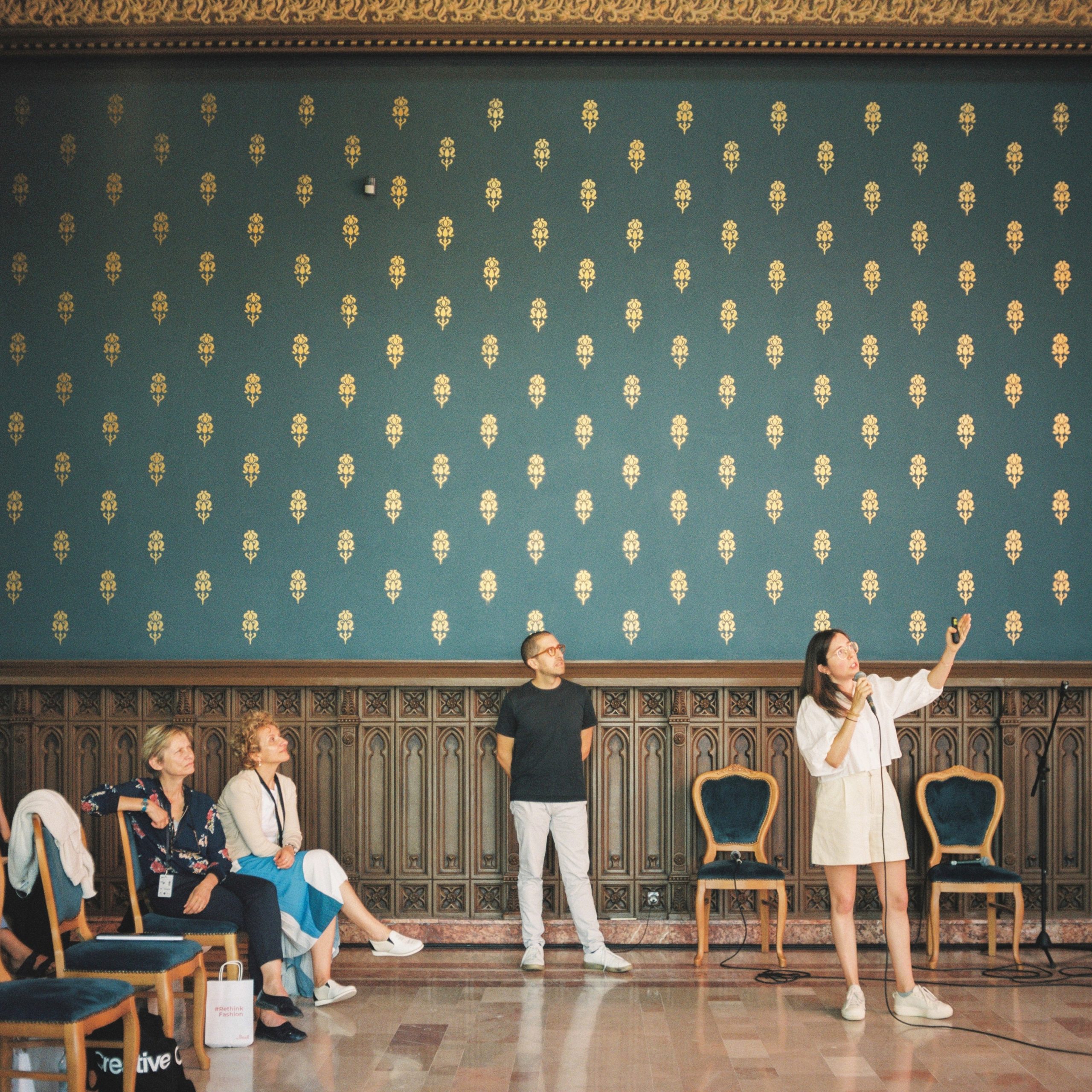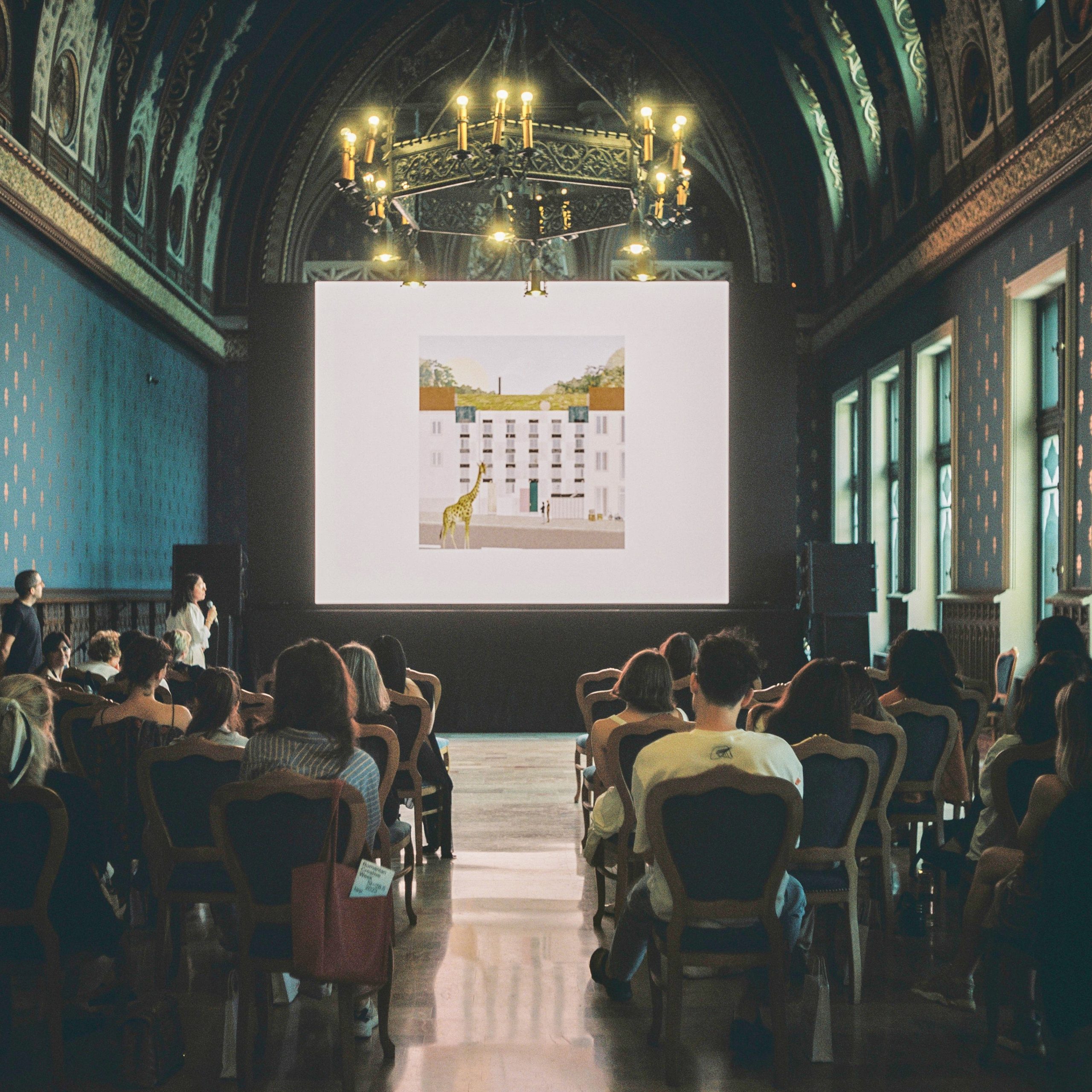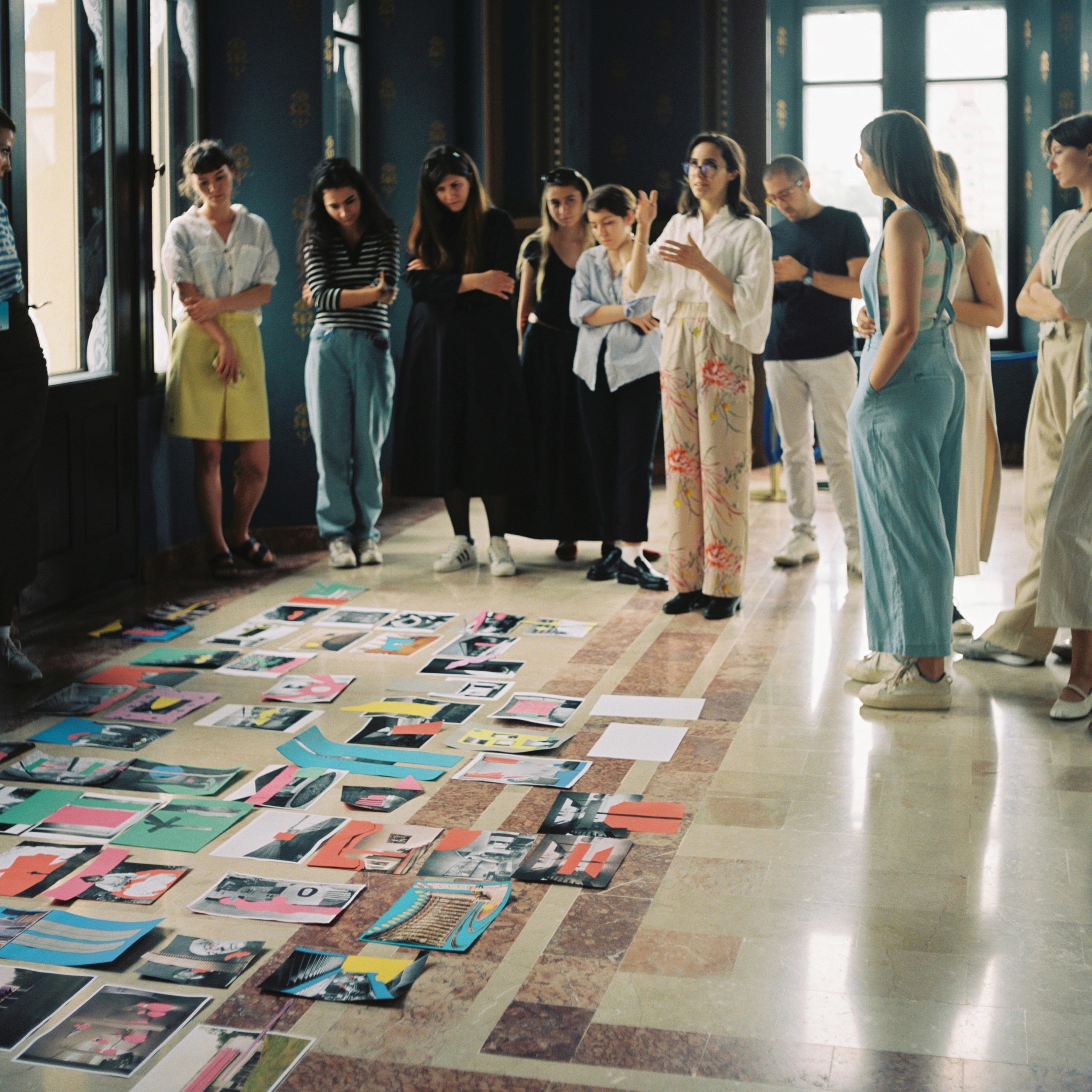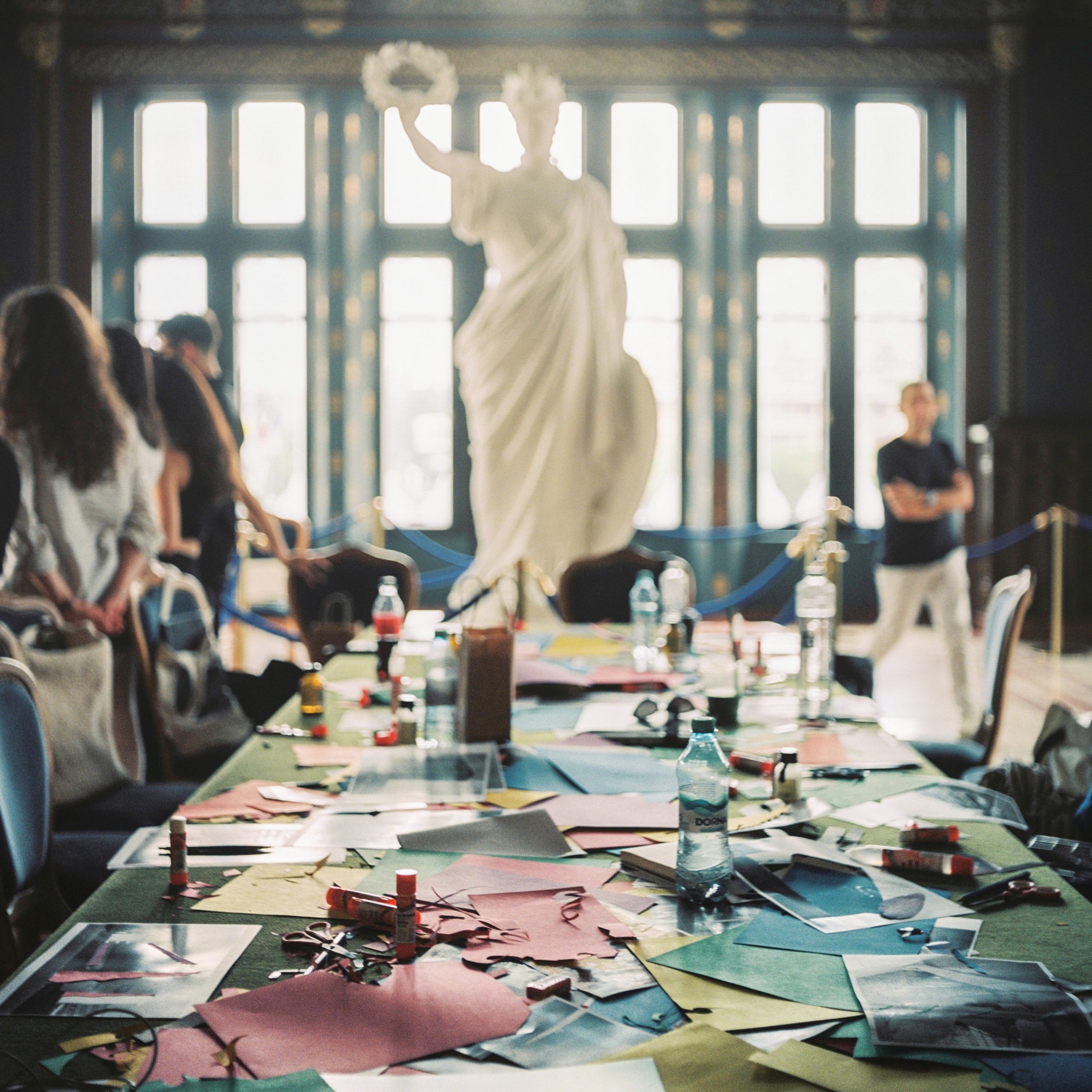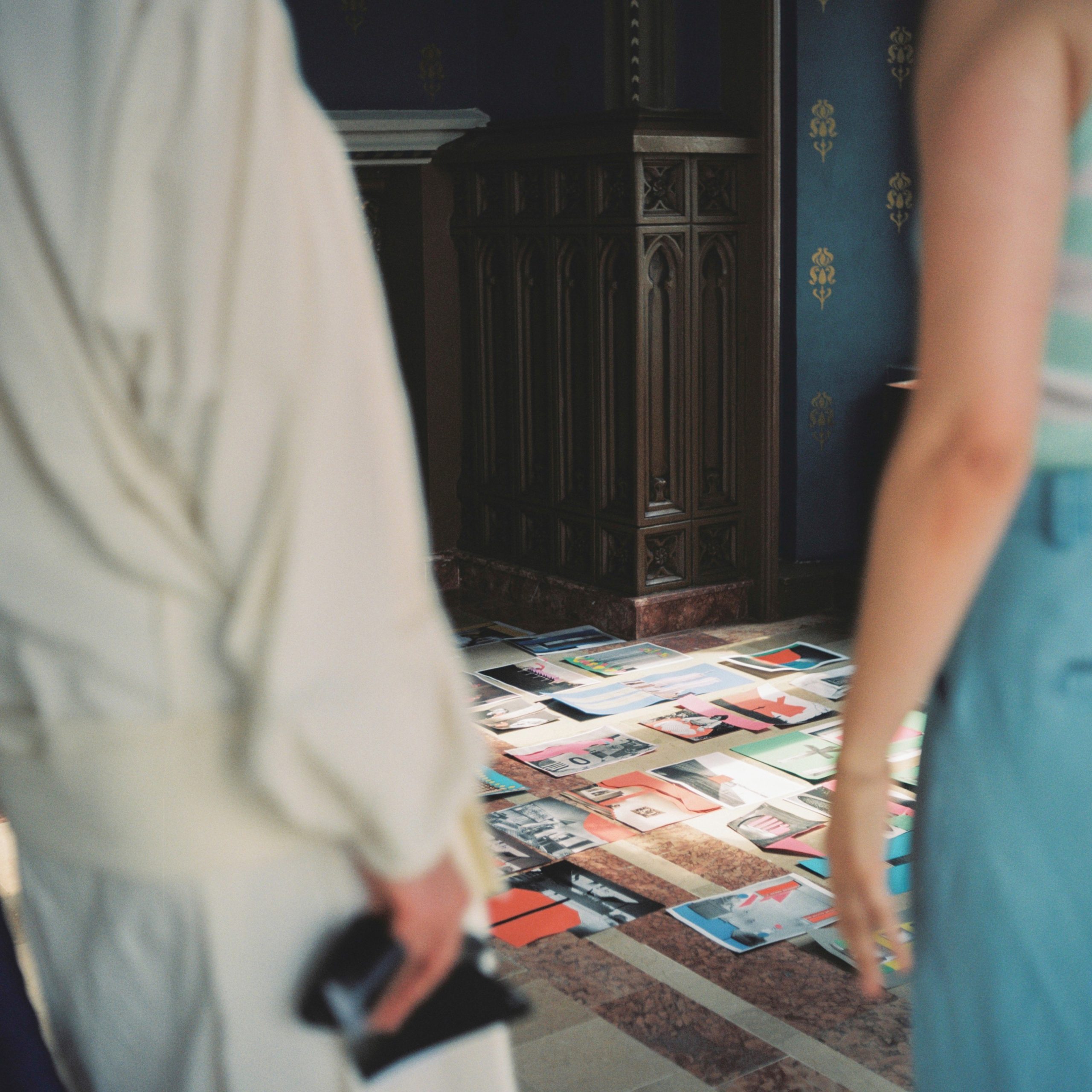Flat Fictions x fala atelier
In architecture, the act of representation traditionally follows a clear, almost dogmatic trajectory: it begins with the idea and progresses toward materialization —from concept to construction. This formula also implies a relationship between architecture and the space to be built, in which the architect is the originator, the builder is the end user, and the means of execution are always subject to negotiation.
Photographs: Vlad Pătru
Since its inception more than ten years ago, fala atelier has worked using the playful technique of collage. At the time, it was an accessible representational tool that became their primary mode of experimentation—offering both freedom and a degree of abstraction that preserves a close relationship between architecture and its generative concept. In recent years, Filipe and his team have learned more toward axonometric diagrams, which provide concrete information usable in production.
Collages are impressionistic expressions—drawings with a rhetoric frozen in time. They are imprecise and speculative representations, offering richer conceptual tools than photorealistic renderings precisely because of the uncertainty they introduce—generating a kind of limbo. In doing so, they create a distance from reality. Collages cite and blend references while striving for beauty through naive visual strategies.
In contrast, the axonometric diagrams that Fala Atelier has increasingly used offer clearer documentation of process and production and serve as an effective archive for long-term project preservation.
The coded language used by Fala deliberately distances itself from the specialized register of permitting drawings. That, of course, exists too—but the way they chose, years ago, to compose drawings for publication is a political statement of sorts: it subtracts tectonics from the discourse and focuses instead on essence.
Because in today’s media frenzy, architecture—more than ever—needs narratives to remain a relevant discipline.
Building on these reflections, during Romanian Creative Week 2023, we organized a workshop titled flat fictions, where architects and architecture students were invited to create collage drawings as a means of exploring architectural thinking beyond conventional representation. The workshop was inspired by fala atelier’s unique approach and their longstanding use of collage as both a conceptual and graphic tool.
Fala is an architecture practice based in Porto, Portugal. Founded in 2013 and currently led by Filipe Magalhães, Ana Luisa Soares, Ahmed Belkhodja, and Lera Samovich, Fala has lectured internationally at institutions such as the AA, RIBA, and Barbican in London, GSAPP in New York, The Graham Foundation in Chicago, Rice University in Houston, BOZAR in Brussels, and Casa dell’Architettura in Rome. In addition to their current teaching roles in Paris, Geneva, and Lisbon, the studio has taught at schools of architecture in Toronto, Milan, Venice, Munich, and London, among others. Their work has been exhibited at the Venice and Chicago Architecture Biennials, the Serralves Foundation, and the Pavillon de l’Arsenal in Paris, with solo exhibitions in Germany, Italy, France, and Portugal.
Fala’s practice focuses on the scale of the fragment, working with a minimal vocabulary. They are often drawn to specific architectural elements—seduced by their repetition, their oddity, or their poetic uselessness. By consciously eliminating the obvious and the uninspiring, they assemble ambiguous figures and impossible objects, which they study, multiply, enlarge, and ultimately perform through overlay and juxtaposition.
The Flat Fictions workshop drew directly from this ethos, encouraging participants to see representation not merely as a means of communication, but as a field of research and invention. It became a space for playful rigor—where collage was not a retro stylistic tool, but a critical lens through which architecture could be reimagined.
The workshop was part of Romanian Creative Week 2023
Curators: Anda Zota & Catarina Pruteanu

